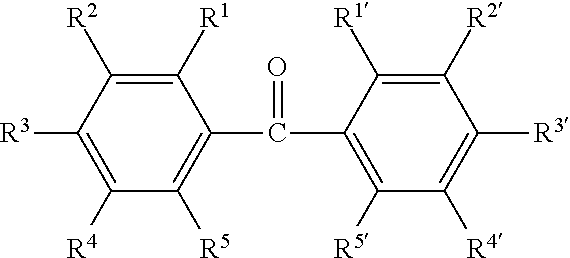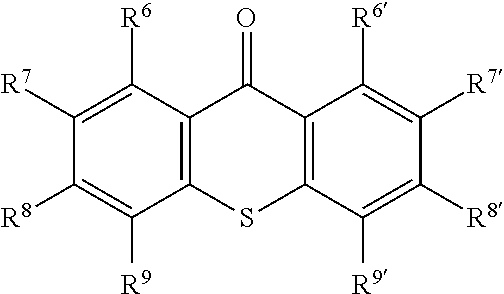Surface modification method and surface modification body
a surface modification and body technology, applied in the field of surface modification methods, can solve the problems of affecting the original function of the device, difficult to selectively adsorb these specific cells, coating layer separation or peeling, etc., and achieves suppressing the deterioration of low adhesion properties or selective adhesion properties, the effect of low adsorption properties
- Summary
- Abstract
- Description
- Claims
- Application Information
AI Technical Summary
Benefits of technology
Problems solved by technology
Method used
Image
Examples
example 1
[0077]A 3 wt % solution of benzophenone in acetone was applied to the surface of a polyethylene terephthalate (PET) object intended to be modified, so that benzophenone was adsorbed on the surface, followed by drying. Then, the surface was irradiated with LED light (5 mW / cm2) with a wavelength of 365 nm for 60 minutes while the object was rotated such that the entire surface was irradiated with light.
[0078]Subsequently, the surface was immersed in an aqueous solution of acrylamide (1.25 M) in a glass reaction vessel. The reaction vessel was sealed with a rubber stopper, and argon gas was inserted and allowed to bubble through the solution for 120 minutes to remove oxygen. While being rotated, the glass reaction vessel was irradiated with LED light with a wavelength of 365 nm for 300 minutes to cause radical polymerization, whereby polymer chains were grown on the PET surface. Thus, a surface-modified body (polymer brush) was prepared.
example 2
[0079]A 3 wt % solution of benzophenone in acetone was applied to the surface of a PET object intended to be modified, so that benzophenone was adsorbed on the surface, followed by drying.
[0080]Subsequently, the surface was immersed in an aqueous solution of acrylamide (1.25 M) in a glass reaction vessel. The reaction vessel was sealed with a rubber stopper, and argon gas was inserted and allowed to bubble through the solution for 120 minutes to remove oxygen. While being rotated, the glass reaction vessel was irradiated with LED light (5 mW / cm2) with a wavelength of 365 nm for 300 minutes to cause radical polymerization, whereby polymer chains were grown on the PET surface. Thus, a surface-modified body (polymer brush) was prepared.
example 3
[0081]An aqueous solution of acrylamide (1.25 M) was prepared using a 0.015 wt % aqueous solution of benzophenone. The surface of a PET object to be modified was immersed in the aqueous solution in a glass reaction vessel. The reaction vessel was sealed with a rubber stopper, and argon gas was inserted and allowed to bubble through the solution for 120 minutes to remove oxygen. While being rotated, the glass reaction vessel was irradiated with LED light (5 mW / cm2) with a wavelength of 365 nm for 300 minutes to cause radical polymerization, whereby polymer chains were grown on the PET surface. Thus, a surface-modified body (polymer brush) was prepared.
PUM
| Property | Measurement | Unit |
|---|---|---|
| wavelength | aaaaa | aaaaa |
| length | aaaaa | aaaaa |
| wavelength | aaaaa | aaaaa |
Abstract
Description
Claims
Application Information
 Login to View More
Login to View More - R&D
- Intellectual Property
- Life Sciences
- Materials
- Tech Scout
- Unparalleled Data Quality
- Higher Quality Content
- 60% Fewer Hallucinations
Browse by: Latest US Patents, China's latest patents, Technical Efficacy Thesaurus, Application Domain, Technology Topic, Popular Technical Reports.
© 2025 PatSnap. All rights reserved.Legal|Privacy policy|Modern Slavery Act Transparency Statement|Sitemap|About US| Contact US: help@patsnap.com



